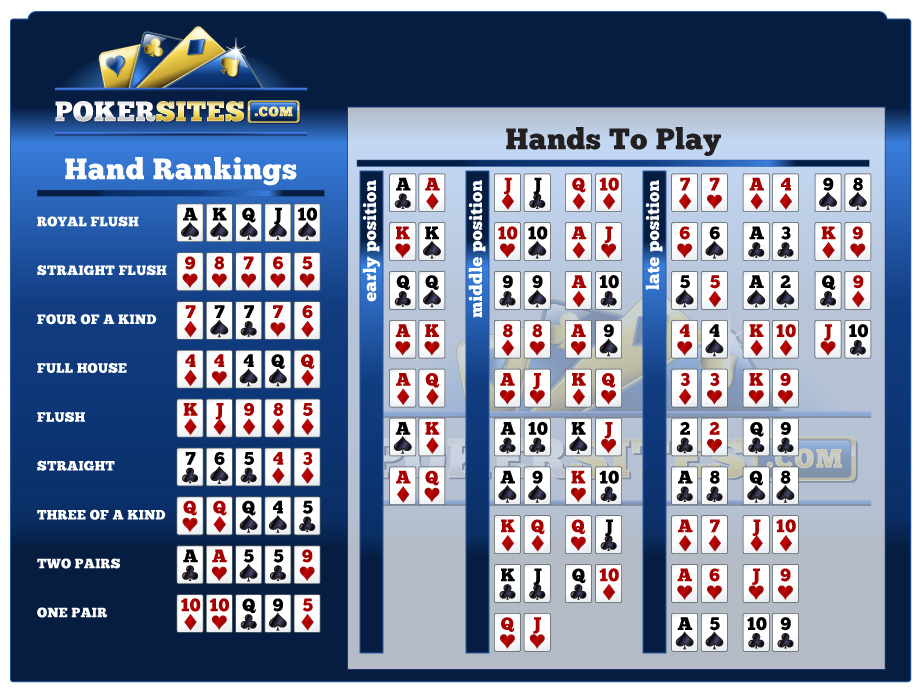Texas Holdem Hand Vs Hand Odds
This grid compares the strength of a particular Texas hold'em hand (in this case ) against all other hands. Each square represents a pair of opponent cards, and the color represents the relative strength of these two hands — the redder the square, the more likely the opponent hand is to win. These probabilities were computed by enumerating all ≈1.3 trillion hands of heads-up Texas hold'em.
Straight in poker is a much more common hand than those higher in poker hands rankings, so you will see it more often. Here are the most important odds for making poker Straight Texas Holdem hands: The odds of flopping a Straight is 1,04% when you have any connected starting hand. Calculating Hand Odds and Poker Odds. Calculating hand odds are your chances of making a hand in Texas Hold'em poker. For example: To calculate your hand odds in a Texas Hold'em game when you hold two hearts and there are two hearts on the flop, your hand odds for making a flush are about 2 to 1. In Texas Hold'em, poker odds are THE probability tool you need as a poker player. In fact, you should always be thinking about poker odds - yours and your opponents' - when making decisions. In short, poker odds is the probability of you winning that hand, or the price it offers (pot odds).

Navigating the Grid
Opponent pair cards are organized along the main diagonal, in a band of 4x4 boxes. Opponent suited cards lie along other diagonals. The dark squares correspond to impossible hands, where a card is duplicated.
Tidbits

If you are holding a pair, an opponent holding any higher pair has essentially the same advantage over you, regardless of the rank of the pair. In fact, compared to (say) a pair of 6s, a pair of 7s is slightly better than a pair of Aces.
While a pair of Aces is the strongest hand averaged over all opponent hands, the single strongest heads-up face-off is a pair of Kings vs a K+2 offsuit.
Once the flop has been dealt in Texas Hold'em, you'll be able to count your outs and know how likely it is your hand will improve. That will tell you whether you should stay in the hand or fold.
You can figure out your outs and odds for any hand, but here is a quick and dirty list of the most common scenarios:
Texas Hold'em Cheat SheetOdds Based on Outs after the Flop
If after the flop, you have:
Two outs: Your odds are 11 to 1 (about 8.5 percent)
A common scenario would be when you have a pair and you are hoping your pair becomes a three-of-a-kind (a set).
Four outs: Your odds are 5 to 1 (about 16.5 percent)
A common scenario would be when you are trying to hit an inside straight draw (there are 4 cards of one number that will complete the straight) or you have two pairs and you hope to make a full house (there are three cards remaining of one number and two of the other).
Eight outs: Your odds are 2 to 1 (about 31 percent)
A common scenario would be that you have an open-ended straight draw. There are four remaining cards of two different numbers that will complete your straight, on the high end and on the low end.
Nine outs: Your odds are 2 to 1 (about 35 percent)
This is the common scenario when you have a flush draw. Any of the nine remaining cards of the suit will give you a flush.

Fifteen outs: Your odds are 1 to 1 (about 54 percent)
A scenario for this is having a straight and flush draw, where either any of the nine remaining cards of the suit will give you a flush, while there are four cards remaining of each of two numbers that would complete a straight. However, you don't count the same cards twice as outs, so those of suit you hope to get don't count again.

The Rule of Four and Two
These odds only apply to counting both the turn and the river, so they assume you will stay in the hand until the showdown. Your odds are only about half as good for a single card draw, such taking the hit on the turn or taking the hit on the river. A common way of looking at the difference in the odds when you will be seeing two cards compared with one is called the Rule of 4 and 2.
Texas Hold'em Hand Vs Hand Odds
After the flop, count your outs and multiply them by four to get your percentage odds. This doesn't give you an exact number, but it is quickly in the ballpark. With 15 outs, 4 x 15 = 55 percent you'll complete that straight or flush with the next two draws.
Texas Holdem Hands And Odds
However, when you are calculating the odds that a single draw will improve your hand, you multiply the outs by two rather than 4. With 15 outs, 2 x 15 = 30 percent chance.